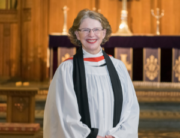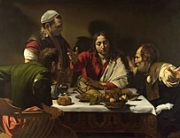A Homily given during 6pm Night Prayer, by The Rev’d Dr Lynn Arnold AO, on the 14th January 2024.
A Philosophy or a Theology of Hope – 2
May the words of my mouth and the meditations of our hearts be worthy in your sight, O Lord, our Rock and our Redeemer. Amen.
In his epistle to the Romans, Paul had written:
Now hope that is seen is not hope, for who hopes for what one already sees?
Have you wondered what a seen hope is? Perhaps you might think it is an expectation of perceivable outcomes – I hope for a good job, riches, a good relationship, for example. Whatever you might think a seen hope is, I am supposing you are not imagining a physical entity called ‘Hope’.
Yet, when Paul wrote ‘Now hope that is seen is not hope’ to the believers in Rome, he was writing to a community who lived in a place where it was indeed possible to see ‘hope’; and to do so in two distinct ways. Firstly, principally in the Forum Holitorium (but also in other places in the city and empire) there stood the Temple to the goddess Spes, the goddess of Hope. The symbol of this goddess was a cornucopia spreading forth the bounty of the earth. Significantly, this temple was physically next to the Temple of the god of Fortune, a juxtaposition that had meaning to worshippers of the Roman gods – for hope and fortune were seen to be closely related. One could have hope if one had good fortune. The idea of hope in the absence of good fortune would have seemed an oxymoron to ancient Romans.
But there was a second tangible ‘hope’ to Romans living in the time of Paul; a tangibility that hadn’t always been part of Roman thinking, having only started a few decades earlier than the time of Paul’s letter. It was an incarnation of hope in the person of the leader. M E Clark writes of this personification of hope:[1]
… the political idea of hope in a charismatic personality became especially popular toward the end of the republic … during the period of upheaval after 44BC a need arose for a single figure who provided confidence and the hope of civil blessings.
Such a person was the young Octavian, later Augustus, of whom Cicero wrote:[2]
Magna spes est in eo [great hope is in him]
In this context, Paul’s words – ‘now hope that is seen is not hope’ – take on a greater significance than we might first have understood. Last week, I spoke about Paul’s speaking into the Greek idea of hope – speaking of it being a positive strength to a community which had a depreciative view of the concept, regarding it as a sign of weakness. In the case of the Romans, Paul was targeting a different misconception of hope. Through the centuries, Roman ideas of hope had moved from the pessimism of the ancient Greeks through a stage of ambivalence onto a qualified virtue following Roman victories against the Carthaginians – a period when an alliance between hope and fortune had seemed proven.
But if hope was dependent on fortune, then there must also have been a concept of hopelessness. Indeed, there was a phrase for such an idea – spes inanis, literally inane hope, or vain hope.
Into this perspective of a hope dependent upon good fortune, Paul had also written:
But if we hope for what we do not see, we wait for it with patience.
‘We wait for it with patience’ suggests that his idea of hope was a child of endurance or forbearance, not of good fortune. Here we find a fundamental difference between the Judaic-Christian idea of hope from that of the world. The late Jonathan Sacks, former chief rabbi of the UK, wrote an article ‘How the Jewish people invented Hope’, in his article he argued that real hope is for a ‘world that could be – but is not yet’. Sacks wrote:[3]
The Greeks gave the world the concept of tragedy. The Jews gave it the idea of hope.
Elaborating on this he stated that:
Judaism is the voice of hope in the conversation of mankind … in all cases (it) refus(es) to see things as inevitable … every element of Jewish law, is a protest against escapism, resignation or the blind acceptance of fate. (It is) a sustained struggle, the greatest ever known, against the world that is, in the name of the world that could be, should be, but is not yet.
In such a perspective there can be no theological justification for a concept of hopelessness, which is born of a fatalistic view of life, a view that circumstances past determine the present and the future. In such a view, my conversant whom I cited last week about those abused children had indeed been rational in saying that they had no hope. Aristotelian thought says that every story has a beginning, a middle and an end; but Sacks says of the Judaic stories from Scripture:
I know of no other stories that have the … form (of) … a beginning but no end.
The suggestion here is that to have an end would be to prejudice the future by the circumstances of the past. On the other hand, Christian thought does posit an end – the new Jerusalem of Revelation; but what it does not do is prejudice that future with the myopia of the past. Paul, in his letter to the Ephesians, alluded to this when he wrote:
Now to him who is able to do far more abundantly than all that we ask or imagine, according to the power at work within us. [Eph 3:20]
‘More than we can ask or imagine’ – anything we are capable of ever asking, or even imagine is a product of our past experiences, either individually or collectively. Yet here we were told that God is beyond that accumulation of past experiences. It is in that ‘beyond’ that transcendent hope can be born.
Jewish transcendent hope enabled them, illogically by worldly reason, to see a Promised Land out of four centuries of enslavement, or to see a return out of the Babylonian exile. They could do so only by understanding the quantum leap that is the ‘beyond’ of the future – by hoping against the world’s seen hope.
In our e-conversation about Hope and Hopelessness, Henry Ergas had suggested I might be interested in a book by Jonathan Lear – Radical Hope: Ethics in the Face of Cultural Devastation. In this book, Lear writes about the ‘beyond’ of the future, labelling it the ‘abyss’ between the here and now which is the child of the past, and the future possibility that can honour a past but not be poisoned by it. Writing about the experience of the Crow nation in North America, Lear wrote of the perspective of a leader of the nation, Plenty Coup:[4]
Precisely because (Plenty Coup) is witness to the death of traditional subjectivity, he is not in a position to say what the form of Crow flourishing will be … on the basis of his dream, he commits himself to the idea that – on the other side of the abyss – the Crow shall survive, perhaps flourish again … This is a form of hope that seems to survive the destruction of a way of life.
Psalm 62, which we heard this evening had these words:
Nevertheless, my soul, wait in silence for God:
For from him comes my hope. [v5]
Here we may think of the idea of ‘waiting in silence’ being an injunction not to fill our thinking with the shackles of past experience but to fully open ourselves to the possibility of a hope from beyond the abyss – a hope that comes from God.
We will shortly sing most of the verses of that beautiful hymn ‘And can it be that I should gain’. Verse 2 resonates with verse 5 of our psalm:
‘Tis mystery all th’immortal diest
Who can explore his strange design?
In vain the firstborn seraph tries
To sound the depths of love divine!
‘Tis mercy all let earth adorn
Let angel minds inquire no more.
The depths of God’s love are too deep for us to sound, his design impossible for us rationally to explore; like the angels, we need inquire no more. All of this, more than we could ever ask or imagine, is amazing love … and it is from this love that comes the hope that we cannot see but which is there nevertheless.
Let us now, as the organ plays, spend some time reflecting on what unseen hope means to each of us.
[1] M E Clark, Spes in the Early Imperial Cult: the Hope of Augustus, in Numen, Jul 1983, Vol 30, p95
[2] Op.cit, p96
[3] Rabbi J Sacks, How the Jewish people invented hope, www.myjewishlearning.com/article/how-the-jewish-people-invented-hope/
[4] J Lear, Radical Hope: Ethics in the face of Cultural Devastation, Harvard, 2006, p96.





